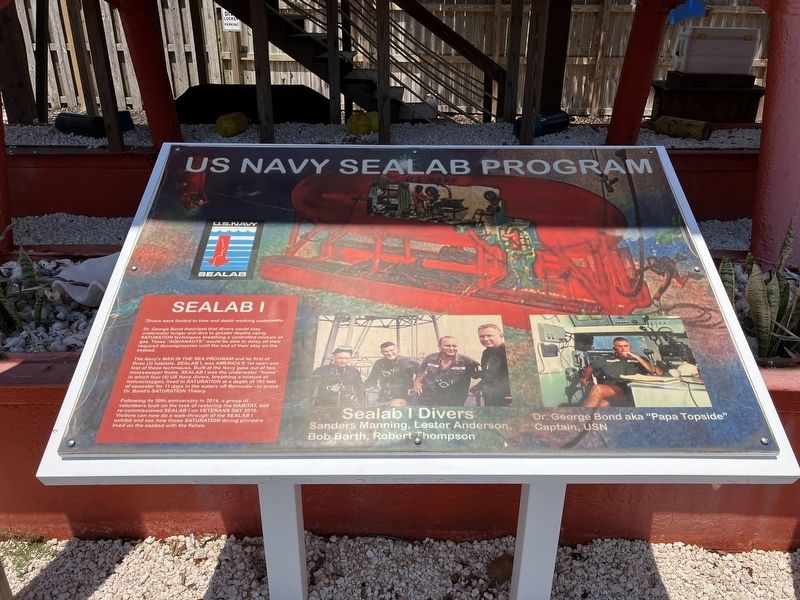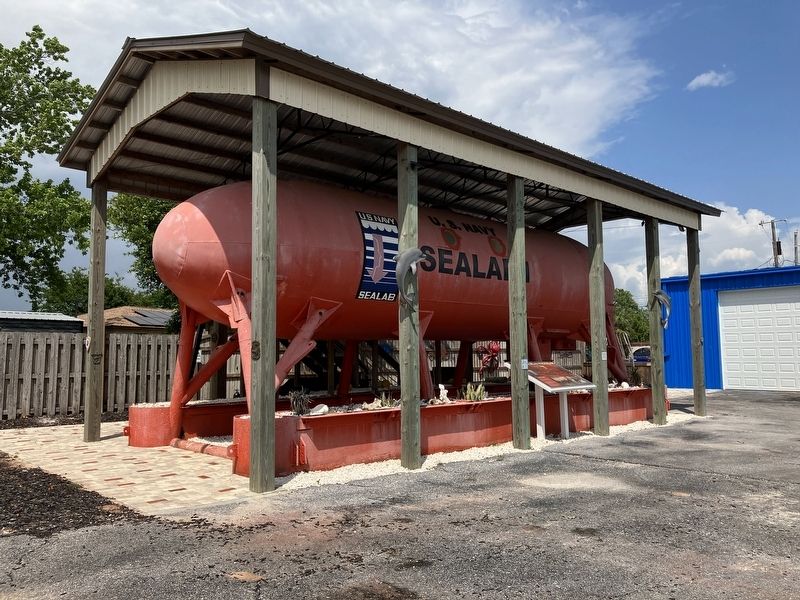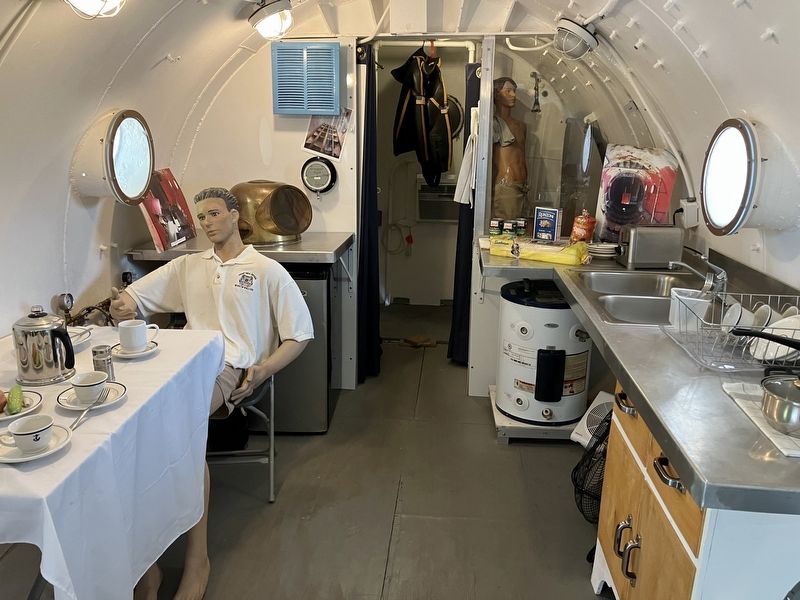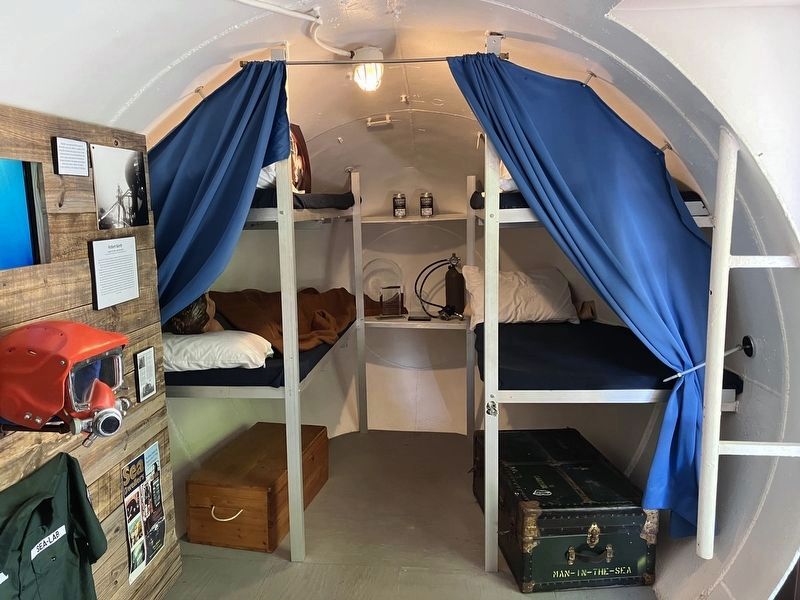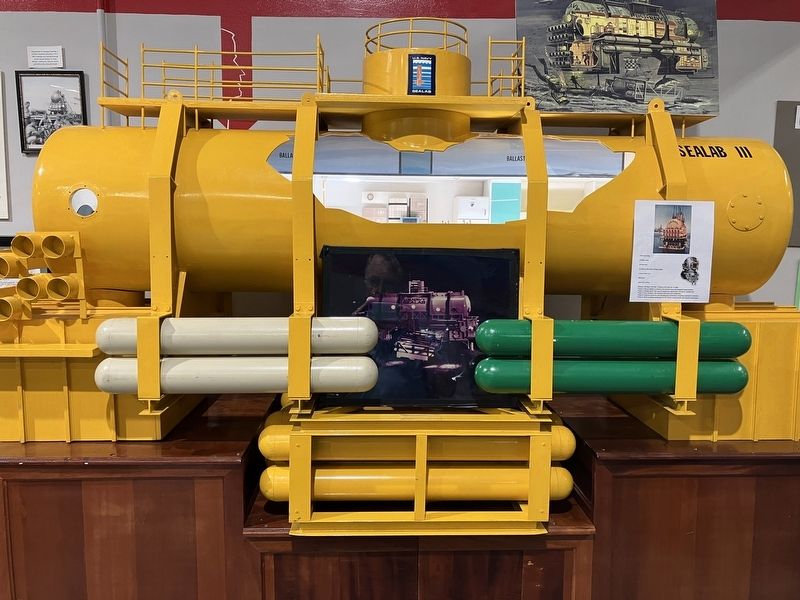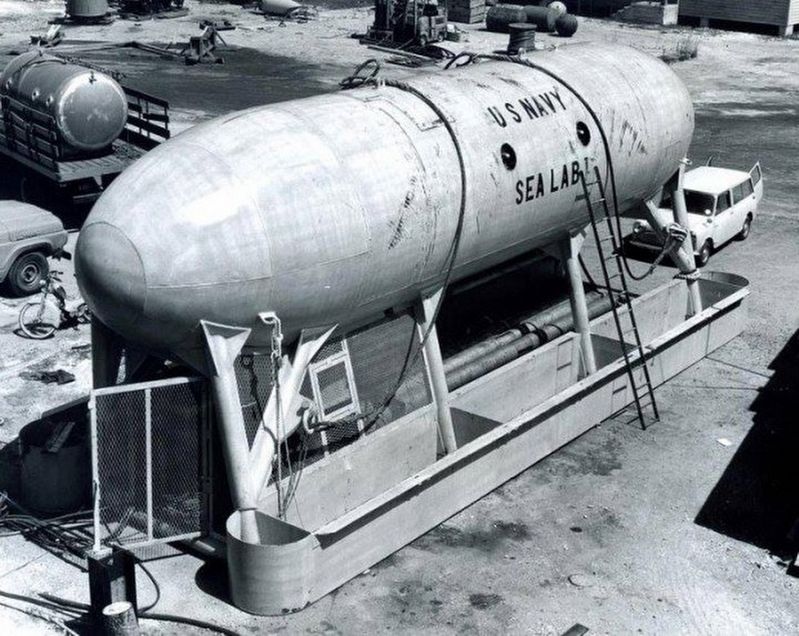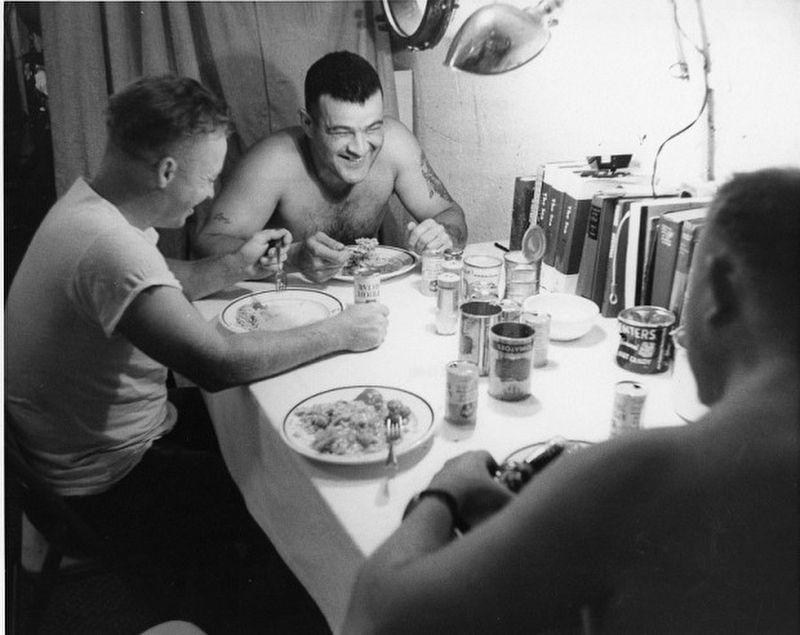Panama City Beach in Bay County, Florida — The American South (South Atlantic)
US Navy Sealab Program
Sealab I
Inscription.
Divers were limited to time and depth working underwater.
Dr. George Bond theorized that divers could stay underwater longer and dive to greater depths using saturation techniques breathing a controlled mixture of gas. These "Aquanauts" would be able to delay all their required decompression until the end of their stay on the seabed.
The Navy's Man in the Sea Program and its first of three (3) habitats, Sealab I, was America's 1st open sea test of these techniques. Built at the Navy base out of two minesweeper floats, Sealab I was the underwater "home" in which four (4) US Navy divers, breathing a mixture of helium/oxygen, lived in saturation at a depth of 193 feet of seawater for 11 days in the waters of Bermuda -- to prove Dr. Bond's Saturation Theory.
Following its 5th anniversary in 2014, a group of volunteers took on the task of restoring the habitat, and recommissioned Sealab I on Veterans Day 2016. Visitors can now do a walk-through of the Sealab I exhibit and see how those saturation diving pioneers lived on the seabed with the fishes.
Erected by Man in the Sea Museum.
Topics. This historical marker is listed in these topic lists: Exploration • Military • Science & Medicine • Waterways & Vessels. A significant historical date for this entry is July 22, 1964.
Location. 30° 13.956′ N, 85° 53.6′ W. Marker is in Panama City Beach, Florida, in Bay County. Marker can be reached from the intersection of Panama City Beach Parkway (U.S. 98) and Heather Drive, on the left when traveling east. Touch for map. Marker is at or near this postal address: 17314 Panama City Beach Parkway, Panama City Beach FL 32413, United States of America. Touch for directions.
Other nearby markers. At least 8 other markers are within 13 miles of this marker, measured as the crow flies. Decompression Chamber (a few steps from this marker); U.S. Navy Sealab Program (a few steps from this marker); Techdiver Submarine (within shouting distance of this marker); Bid-A-Wee Beach Park (approx. 3.3 miles away); Gideon’s Fish House (approx. 11.6 miles away); Swann House (approx. 12.1 miles away); Historic St. Andrews Church (approx. 12.2 miles away); Dunton’s Tastee Freez (approx. 12.2 miles away). Touch for a list and map of all markers in Panama City Beach.
Also see . . .
1. Helium Played Dual Role In Sealab Experiment -- Bernewa. It was during that year that Sealab I, an underwater habitat developed by the U.S. Navy, was lowered a few miles off of the island’s coast, intended to study the effects of extended periods of working and living underwater. (Submitted on March 23, 2024, by Barry Swackhamer of Brentwood, California.)
2. 50th anniversary of Sealab II -- San Diego Reader. From August 28, 1965, to October 14 the same year, three teams of ten rotated on 15-day stints, living underwater and performing tests. ... Several Scripps scientists participated in Sealab II. (Submitted on March 23, 2024, by Barry Swackhamer of Brentwood, California.)
3. Underwater Habitat -- Wikipedia. The history of underwater habitats follows on from the previous development of diving bells and caissons, and as long exposure to a hyperbaric environment results in saturation of the body tissues with the ambient inert gases, it is also closely connected to the history of saturation diving. The original inspiration for the development of underwater habitats was the work of George F. Bond, who investigated the physiological and medical effects of hyperbaric saturation in the Genesis project between 1957 and 1963. (Submitted on March 23, 2024, by Barry Swackhamer of Brentwood, California.)
4. SEALAB -- Wikipedia. ...a second attempt, during which aquanaut Berry L. Cannon died. ...The SEALAB program came to a halt, and although the SEALAB III habitat was retrieved, it was eventually scrapped. Aspects of the research continued, but no new habitats were built. (Submitted on March 23, 2024, by Barry Swackhamer of Brentwood, California.)
Credits. This page was last revised on April 18, 2024. It was originally submitted on March 23, 2024, by Barry Swackhamer of Brentwood, California. This page has been viewed 70 times since then. Last updated on April 17, 2024, by Brandon D Cross of Flagler Beach, Florida. Photos: 1, 2, 3, 4, 5, 6, 7. submitted on March 23, 2024, by Barry Swackhamer of Brentwood, California. • Devry Becker Jones was the editor who published this page.
